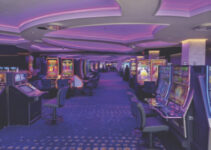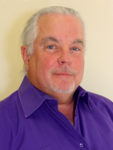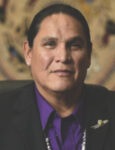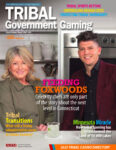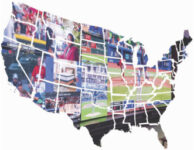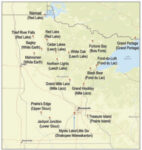
Back in my more rowdy days, when I was risking precious beer money at my favorite Mississippi casinos, I didn’t really give much thought as to why I went to a particular property. At first, it was just about the experience of going, but after I had stepped in enough Biloxi establishments and the initial mystique and allure wore off, I started gravitating to only a couple of properties.
Then it dawned on me. I wasn’t playing at these casinos because of the atmosphere, the perceived level of “payback” or because of an outstanding loyalty program—I was playing at these places because it felt like I should be there. All the external marketing spoke to me. Whether it was the billboards along I-10 or the mailers I received, I was drawn to the brands with the strongest creative aesthetics.
Fast forward several years, and not much has changed in my thinking, except maybe I’ve swapped out beer for gin. But while running an ad agency that specializes in casino clients, I’ve had an up-close view of the rapid expansion of gaming throughout the U.S. in the past 10 years.
It’s been fascinating to see regional markets emerge, buoyed by tribal gaming entities and revenue-seeking states willing to allow commercial, land-based casinos, and then quickly approach a saturation point. From Pennsylvania to northeast Oklahoma to my home state of Alabama, the drive-for-a-night casino can no longer rely on convenience as a marketing solution.
In my opinion (and of course I’m biased), the casinos standing out in crowded regional markets are the ones doing creative work that gets talked about. Whether it’s a memorable TV spot that doesn’t get skipped on the DVR or a special direct mail piece that won’t end up in the trash, good creative gets noticed.
This is inherently subjective, but when I say “good creative” I’m talking about the sum of all parts. From the copy platform and tone, to the color palette and mood, to the production value and execution, it all has to add up and make sense.
When we work on a client creative brief at my agency, the most important thing we need to understand as a team is what we refer to as “the one thing.” This is the pivotal idea that forms the bedrock of the work, and all tactics flow cohesively from this idea. Without strategic glue underpinning the creative, it’s just words and pretty pictures.
And while a good majority of casinos understand this, it’s surprising that only a few put it into consistent practice. Com-mercial casino operators often benefit from an established brand presence and familiar iconography, thus influencing tribal gaming operators in the same market to be nimble and inventive. By adapting quicker to market conditions and adjusting creative output as need be, tribal casinos have proven formidable competitors.
For example, I’d suggest checking out some of the advertising produced by Northern Quest Resort & Casino outside of Spokane, Washington. I’ve admired its work for some time, as it seems to effortlessly balance humor, playfulness and authenticity in both its commercial advertising and internal back-of-house marketing.
I’m apparently not the only one that has noticed the tremendous efforts from Northern Quest, as the property recently received the Barona/VCAT Award for Excellence in Indian Gaming Marketing. I’m not privy to Northern Quest’s financials, but I really don’t have to see the numbers to know that great creative has a positive effect on the bottom line. I’ve been able to witness this firsthand, especially with our tribal casino clients.
It’s funny that, for an industry that attracts customers who love risk, casino advertising has long been affiliated with traditional, risk-averse strategies. I think that’s more a symptom affecting mostly larger casino brands, as our tribal clients deal with fewer decision-making rungs and push innovative ideas to market with alacrity.
This happened last year with our client, Hard Rock Hotel & Casino Tulsa, owned and operated by Cherokee Nation Entertainment. Located in the dense tribal gaming market of northeast Oklahoma, Hard Rock Tulsa needed a way to stand out while supporting its Halloween promotion, the largest and most important promo of the year.
Early on in the creative process (probably back in February or March 2014), we identified an opportunity to integrate social mobile games that would thread together all the thematic elements of the promo. When we went to pitch our initial collateral looks, we included our idea about the mobile games, sharing a general overview of proposed game mechanics along with a few storyboard sketches.
Without hesitation, our client told us to move forward with developing the games. We delivered the games for launch at the end of September, concluding a streamlined, collaborative process that essentially hinged on the client trusting us. The result was impactful for the Hard Rock Tulsa, as it became first in its market to extend the brand online in a fun, interactive way.
Exceptional creative matters today more than ever, and the casinos that embrace innovative ideas while holding true to fundamental principles of advertising will be well-positioned to hold or increase their market share in a packed field.



